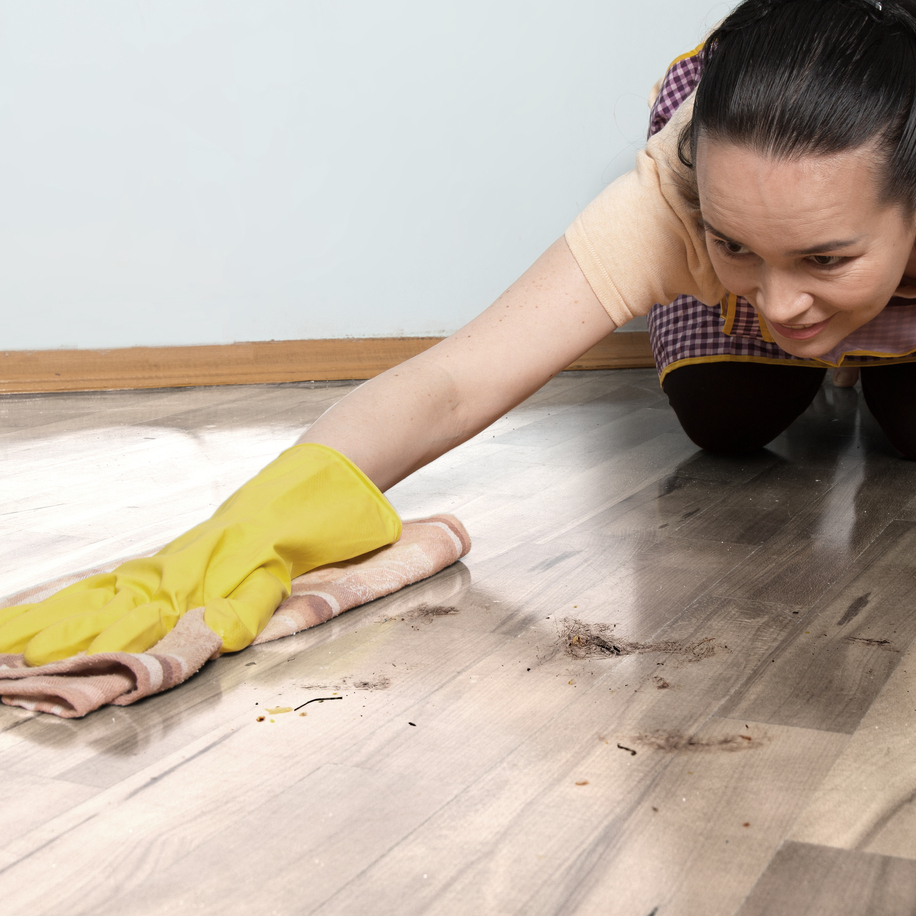Hidden Hotspots at Home for Bacteria & Viruses:
Know the Facts and How to Fight Them Off

Table of Contents:
- How do bacteria and viruses spread?
- 7 hotspots for germs in your home that you did not realise
- Identifying the culprit: Common types of bacteria and viruses around you and their impact on your health and assets
- 6 great ways to maintain good hygiene to prevent bacteria and virus build up in your home
- Stay confident, clean, and fresh with nanoe™ X
Did you know that an average smartphone has more than 17,000 bacterial gene copies that carry 10 times more bacteria than most toilet seats? And that is because we don’t clean our smartphones as often as we should.
Whenever you touch your device with unwashed hands, bacteria from your hands will spread to your phone. As the screen is usually warm, bacteria thrives and transfers to your fingers, face, eyes, ears, and lips. Our hands often end up with germs due to various factors. One significant contributor is the frequent sharing of common areas with many people. When multiple individuals touch the same objects or surfaces, such as doorknobs, elevator buttons or handrails, germs can easily transfer from one person to another. Additionally, poor personal hygiene practices play a significant role in the accumulation of germs on our hands.
Germs are thriving everywhere around you. Although some good bacteria are necessary and beneficial for your body to fight the bad ones, there are other airborne and adhered species known to spread illness and disease.
So, what can you do to keep bad bacteria at bay? In today’s topic, we will focus on bacteria growth and how you can fight effectively against it.

How do bacteria and viruses spread? 1,2
Through touch
Bacteria can spread through touches of unclean surfaces or devices such as mobile phones. Bacteria can be transferred from contaminated surfaces to our hands and then onto our devices, providing an ideal breeding ground for their growth and transmission.
Through injuries
Bacteria enter the body through open wounds or cuts, increasing the chances of infecting surrounding tissues and potentially spreading to other parts of the body.
Through inhalation
When tiny airborne droplets containing the bacteria are inhaled into the respiratory system, they can potentially cause infections in the lungs or other parts of the respiratory tract.

7 hotspots for germs in your home that you did not realise
1. Handbags
According to studies conducted on 145 purses and wallets, 95%3 had bacterial contamination. Similar to smartphones, handbags are carried everywhere yet not frequently cleaned. Your handbag carries your wallet, keys, smartphones, lipsticks, and other accessories that are contaminated by your unwashed hands. Furthermore, we place our handbags on tables, chairs and on floors which are likely to pick up bacteria.
Tips*:
• If you are carrying food in your bag, make sure it is sealed properly.
• Hang your bags instead of putting them on the floor.
• Regularly clean your hands before taking things from your handbag.
2. TV remote control
One of the items that is often neglected while you clean your home is the TV remote controller4. The device is used by everyone in your household multiple times a day. It gets dropped on the floor, wedged in the couch, coughed on, spilled on, and covered with grease from food. A dirty remote control will attract contagious bacteria and viruses.
Tips*:
• Soak a piece of cotton fabric in rubbing alcohol and use it to clean the remote control, including the bottom and all the crevices.
3. Doorknobs
Another household item that gets neglected when cleaning are your doorknobs and handles, making it among the top 5 dirtiest objects5 at home. It is the most common touch point for everyone coming home or going into different rooms within your home.
Most door handles are made of stainless steel, a material that bacteria and viruses thrive in. With suitable temperature and humidity levels, bacteria can thrive for a few hours to a few weeks on surfaces. One of the most common diseases caused by door handles is the common cold since the virus is spread mostly by direct contact with objects or surfaces that have been contaminated.
Tips*:
• Don’t neglect cleaning your doorknobs. Do it as often as possible. Wipe it down with rubbing alcohol or just with soap and water.
4. Computer keyboards
Another household item that is used every day and never gets cleaned is your computer keyboard. Computer keyboards are laced with bacteria. Whenever you eat or drink while typing on the keyboards, your fingers leave behind oil and moisture from food crumbs and beverages. Bacteria love dirty keyboards.
Tips*:
• Turn the keyboard upside down to empty the debris. If you have a rubber dust blower, use it to blow debris out from in-between keys. Dampen cotton swabs with water and alcohol to clean in between keys and lint-free linen to wipe down the rest of the keyboard.
5. Light switches
Like cell phones, light switches have warmth that breeds bacteria. According to one estimate, there are around 217 bacteria per square inch on a frequently touched switch.
Tips*:
• Spray the surface with cleaning and disinfectant products. Use Q-tips to get around the crevices and underneath. Then wipe down with a microfiber cloth or disposable towel.
6. Carpets
There are around 200,000 bacteria present in each square inch of a typical carpet6.
Despite appearing clean, it can accumulate up to four times its weight in dirt, absorbing various organic matter such as food, beverages, moisture, mould, dirt, hair, skin flakes, and other similar substances throughout the day.
Tips*:
• It is advisable to perform routine cleaning with a vacuum cleaner that has robust suction capability that can eliminate germs and bacteria from the carpet.
Alternatively, you can opt for a professional cleaning every 4-6 months.
7. Faucet handles
Faucet handles are another object that can be very filthy and contaminated with bacteria.
Bacteria on the faucet handles can be transferred to the next person who uses the faucet.
Tips*:
• Simply fill a bag with equal parts water and white vinegar. Submerge your faucet and secure it with a rubber band overnight.
* It's important to remember that tips given should be approached with caution and at your own risk. While they may work for some people, everyone's situation and circumstances are different. It's always wise to do your own research and consider the potential risks and consequences before implementing any suggestions.
Identifying the culprit: Common types of bacteria and viruses around you and their impact on your health and assets
A study conducted by Singapore Centre for Environmental Life Sciences Engineering (SCELSE) found that we breathe in thousands of different bacteria species per day. At least 70% of the species are present constantly in the atmosphere7.
Bacteria and virus growth usually depends on climate temperature, pH levels, oxygen levels, humidity, and moisture. Let’s identify some of the most common bad bacteria and viruses found around you.
- Staphylococcus aureus
A type of bacteria that lives on the skin and in the nose. These bacteria also breed on object surfaces and areas where people gather8.
- Staph infection
S. aureus or Staph can cause a range of infections, from minor skin infections like boils and impetigo to more serious infections like pneumonia and sepsis. S. aureus is also becoming increasingly resistant to antibiotics.
- Escherichia coli
A type of bacteria lives in the intestines of healthy humans and animals. Known commonly as E. coli, they can also survive on household surfaces, particularly in areas where food is prepared or consumed9.
- Foodborne disease
Some strains of E. coli, specifically the Shiga toxin-producing E. coli (STEC) can cause foodborne disease when ingested, which can lead to symptoms like diarrhoea, vomiting, and abdominal pain.
- Mould and Mildew
Mould and mildew are types of fungi commonly found in homes. If wet areas in your house are left unattended within 48 hours, the microbes will start to grow and spread10.
- Mould and mildew contamination
Exposure to mould and mildew spores can cause skin allergies and respiratory problems. Some might experience severe symptoms like asthma attacks or lung infections if exposed to large amounts of fungal contamination for extended periods. Mould and mildew contamination can also cause damage to the interior of your house and household items.
- Influenza (Flu)
Influenza viruses have different strains and are responsible for flu, a respiratory disease that can be transmitted from person to person. It affects the nose, throat, and occasionally the lungs, and can result in mild to severe symptoms11.
- Flu symptoms
Symptoms of flu include fever or cold, cough, sore throat, runny nose, muscle or body aches, headaches, and fatigue. In some cases, vomiting and diarrhoea may occur.

6 great ways to maintain good hygiene to prevent bacteria and virus build up in your home
Although we can’t really prevent these bacteria and viruses from entering our homes, there are ways to inhibit and keep them at bay. Here are some tips:
1. Invest in a good air purification system
A good product with a robust air purifying system can help filter out bacteria, dust, and other pollutants in the air and improve the overall air quality in your home.
2. Wipe it off
Bacteria can easily grow and multiply on surfaces of any object. Use a disinfectant cleaner or non-alcohol wipes to wipe down surfaces daily. Also, wash your carpet and upholstery regularly to prevent bad odours.
3. Wash your hands
One of the easiest ways to prevent the spread of bacteria is to wash your hands. Do it regularly before eating or preparing food, after using the bathroom and after coming into contact with potentially contaminated surfaces.
4. Keep your home dry
Bacteria thrive in damp environments, so it's important to keep your home dry. Fix any leaks or water damage fast and use a dehumidifier to reduce humidity levels in your home.
5. Disinfect all cleaning sponges
The sponges that you clean your dishes and sinks are harbouring a lot of bacteria. If you are cleaning with old sponges that have not been disinfected, you are spreading bacteria around your home. So, use a good disinfectant to keep your sponges’ bacteria free. If it gets too old and in bad condition, change it immediately.
6. Maintain good ventilation
Good indoor ventilation plays a crucial role in reducing the risk of infection by diluting and removing airborne pathogens, ensuring a healthier and safer environment for occupants.
It's important to note that many types of good and bad bacteria exist in your home, workplaces, and surroundings. Adopting good hygiene practices, using air purification products, enhancing ventilation, and optimising humidity levels can collectively minimise the spread of bacteria and viruses.

Stay confident, clean, and fresh with nanoe™ X
nanoe™ X technology releases vast amounts of hydroxyl radicals per second, dispersing rapidly to neutralise viral proteins in the air and surfaces. This is extremely beneficial within a residential setting, as nanoe™ X particles can assist to inhibit the growth of bacteria and viruses on surfaces of our commonly used household objects like keyboards and tabletops or personal belongings such as mobile phones and handbags.
It can also purify pollutants floating in the air as well. Sized around 5-20nm, nanoe™ X particles are capable of penetrating deep into fabrics like clothing, curtains, sofas and carpets to inhibit germs. Since nanoe™ X has a deodorisation effect as well, it can help to always keep your home fresh too.
nanoe™ X technology is also tested effective against adhered viruses like Influenza (H1N1 subtype) by 99.9% in 2 hours and staphylococcus aureus by 99% in 8 hours.
Selected nanoe™ X products can also inhibit the activity of airborne bacteria (staphylococcus aureus) by 99% in 3 hours12.
To learn more about Panasonic nanoe™ X click here.
Article Links
1 https://www.cdc.gov/infectioncontrol/spread/index.html
2 https://www.health.state.mn.us/people/handhygiene/why/5ways.html
3 https://www.ncbi.nlm.nih.gov/pmc/articles/PMC4513311/
4 https://www.reuters.com/article/uk-usa-health-hotel-idUSLNE85I00L20120619
5 https://www.psu.edu/news/campus-life/story/think-twice-grabbing-door-knob/
6 https://www.menshealth.com/health/a19537904/eliminate-germs-your-house/
7 https://scelse.sg/the-air-that-we-breathe-bacteria-and-fungi-show-a-precise-daily-rhythm-in-tropical-air-finds-ntu-singapore-study/
8 https://www.foodstandards.gov.au/publications/Documents/Staphylococcus%20aureus.pdf
9 https://www.nature.com/articles/nbt1103-1266b#:~:text=E.,at%20about%2037%20%C2%B0C.
10 https://www.moldbacteria.com/mold/indoor-mold-and-bacteria-and-their-health-effects.html
11 https://www.cdc.gov/flu/about/keyfacts.htm
12 https://www.panasonic.com/global/hvac/nanoe/all/verification/evidence/
Related Products

















